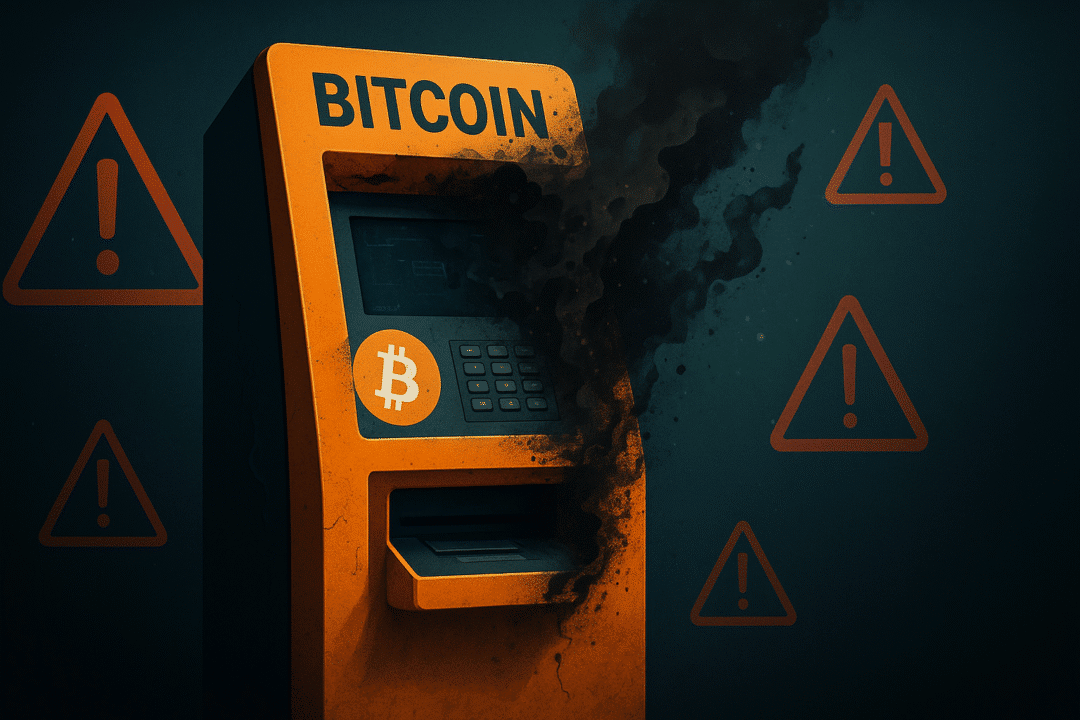

Scammers are targeting victims — especially older Americans — by impersonating officials and directing them to deposit money into cryptocurrency ATMs. Victims lose tens of thousands of dollars in transactions that police say are nearly impossible to trace or recover.
How the scam works
Fraudsters call victims and pretend to be:
- Government agents
- Law enforcement officers
- Bank security personnel
- Family members in distress
They tell the victim their bank account has been compromised or that they must urgently move money to protect it. Then they direct the victim to a Bitcoin ATM, where the cash gets converted into crypto and sent to a wallet the scammer controls.
These machines look like traditional ATMs but don’t connect to your bank account. Instead, they allow people to insert cash and buy cryptocurrency—which can then be sent anywhere, instantly.
Victims lose tens of thousands
In South Hadley, Massachusetts, one employee followed a scammer’s instructions and deposited $11,000 from the store safe into a Bitcoin ATM. Police never recovered the money.
Other residents lost $48,000 and $4,900 in similar frauds.
Selinsgrove, Pennsylvania, also reported a recent case where an elderly resident lost $22,000, falling victim to a fake government call urging them to move their money “for safety.”
These scams are happening nationwide. In 2024 alone, the FBI received 11,000 reports of scams involving crypto ATMs, with total losses of $247 million—a 99% increase from the previous year.
Local towns and states take action
- Waltham and Gloucester, MA, banned cryptocurrency kiosks altogether.
- South Hadley is considering a townwide ban. Business owners would have 30 days to remove the machines or face a $300 daily fine.
- State lawmakers are debating a bill (H 1247 / S 707) that would:
- Limit transactions to $1,000 per person, per day
- Require kiosk operators to register each machine
- Mandate fraud warnings and real-time support
- Force operators to report locations and activities quarterly
Law enforcement backs these moves, saying the machines invite fraud and make investigation nearly impossible.
Why recovery is so hard
Once a scammer gets your money through a crypto ATM, they:
- Move it to a digital wallet
- Split it across multiple accounts
- Send it overseas within hours
By the time victims report the scam, it’s often too late.
“I’ve worked 60 cases like this, and maybe recovered funds in four,” said Waltham Police Detective Michael Maher. Assistant DA Nicholas Atallah said he’s had success in just two cases.
Crypto’s image problem
These scams don’t just hurt victims—they damage the entire crypto industry.
- Retail investors lose confidence
- Regulators face pressure to act
- Projects and exchanges struggle to prove credibility
Crypto thought leaders on Reddit and X (formerly Twitter) now push for:
- Stronger public education
- Scam warnings built into platforms
- More transparency in DeFi and NFT ecosystems
Many agree: until the industry tackles fraud, mainstream adoption will stall.
What investors and residents need to know
- Never use a Bitcoin ATM at the request of a caller, no matter who they claim to be
- No government agency will ask for payment in crypto or through a Bitcoin ATM
- Always verify before acting—call a trusted number, not one provided by a stranger
- Report scams immediately to local police and the FBI at ic3.gov
What’s next for crypto ATM regulation?
If passed, the Massachusetts bill could become a national model. It would:
- Require printed receipts with every transaction
- Mandate blockchain analytics to detect fraud
- Assign a compliance officer to each kiosk network
Industry advocates support regulation that prevents abuse without blocking innovation. “The best way to address crypto fraud is to prevent it in the first place,” said Glenn Kaplan of the Massachusetts Attorney General’s Office.
Bottom line
Bitcoin ATM scams are growing fast, targeting the most vulnerable and exploiting public confusion about crypto. Lawmakers, prosecutors, and town leaders are stepping in—but awareness remains the strongest line of defense.

